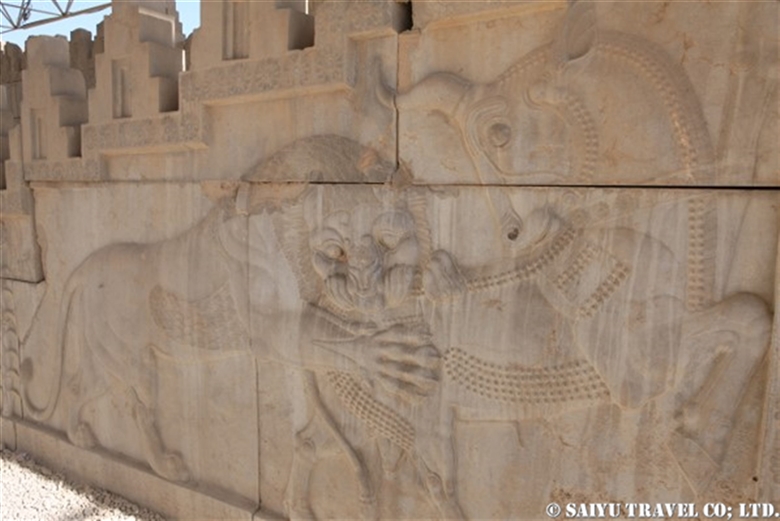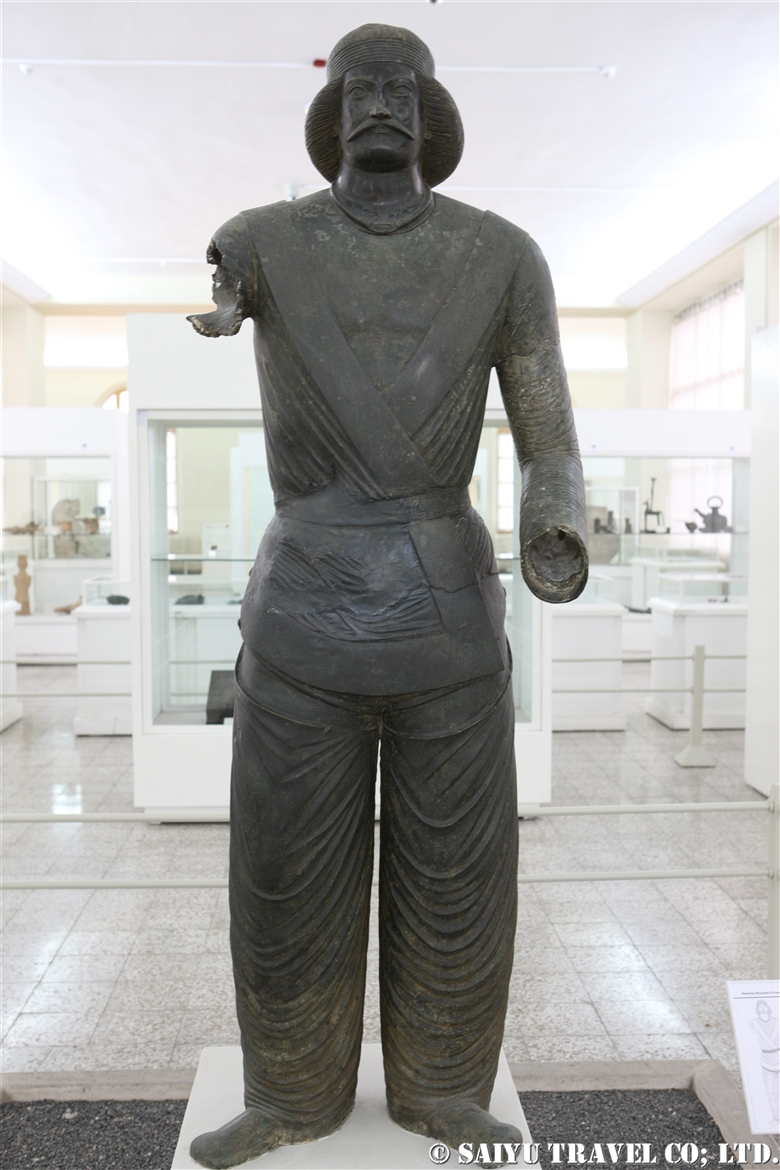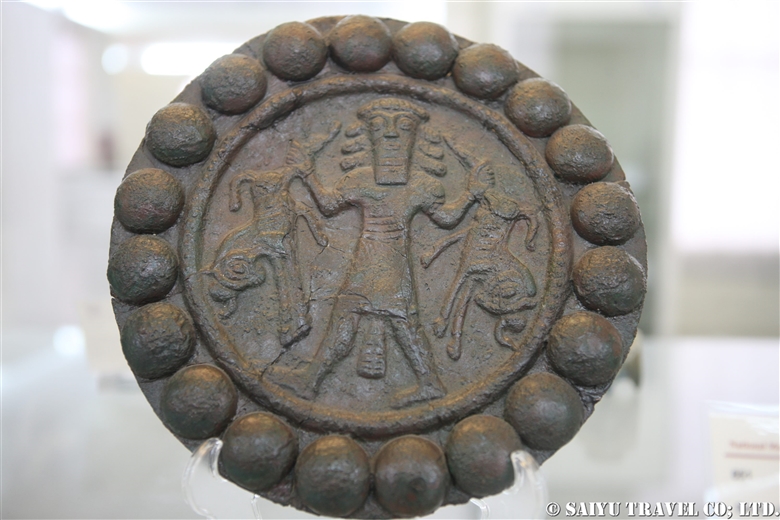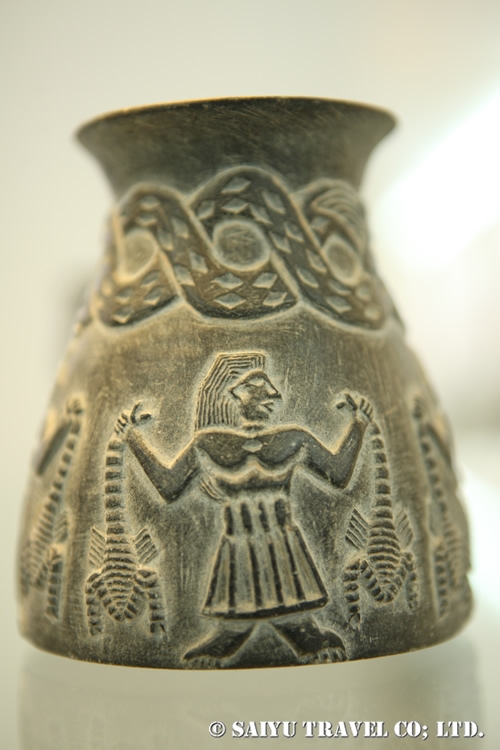In this installment, the rock art introduced here along the Indus River near Tharpan. From Chilas, driving east on the Karakorum Highway, cross the bridge across the Indus River, and then follow the road called Tharpan Road, is where these rocks are located. Since this area of the river is very wide, the rock paintings remain over such a large area, and the rocks there are huge, so there are various rock paintings that have remained here.

It only speculation, but it is thought that this was a large gathering place for people to cross the Indus River because the riverbank is so wide. It seems that many kinds of people of different backgrounds, may have gathered here. Since many were Buddhists, there are many rock paintings related to Buddhism, and there are still many large and magnificent pagoda carved with sharp, straight lines which remain.

Many of the depictions of Buddha were drawn only using lines, and delicate decorations were rarely seen.

The rock paintings other than those related to Buddhism were all spectacular and very interesting as well.

This is a person who has something like a balance next to a pagoda. I wonder, is it depicting the laborer who built the pagoda?

This painting depicts an ibex and a sun-like circle. According to the archaeologist’s guide, this circle depicts a “circular trap” used for hunting. Perhaps because it was a large gathering area for various ethnic groups, there are still some outstanding statues left in the area.
In the photo below, there is a person wearing a Persian costume.

There were also rock paintings of animals drawn in the Persian style.

In the designs of Persepolis, it is comment that the eyes of the animals are drawn with large circles.

And below, the art that caught my interest in Tarpan was the image of a person who might be a Parthian.

The Parthian Empire, which originated since the 3rd century BC, in what is now Turkmenistan and dominated West Asia, was split around 20 AD at the end of its reign. It was split into the Indo-Parthian by King Gondophares. This Indo-Parthian, which was once the capital of Taxila, was also active in the Indus River. Below is a statue of the Parthians in the Tehran Archaeological Museum. The appearance of the person wearing something like a helmet with a brim is common to see in the rock carvings.

Once again in this figure, the person holds the hunted animal in the right hand and a sword in the left hand. It is a typical kind of design that was commonly seen for long time in West Asia.

In this photo, a copper plate from the period 1000 BC, was excavated in the Azerbaijan region of the Tehran Archaeological Museum. A person stands in the center, holding up their hunted prey in both hands. It is also the prototype of the work “Renjumon” in which 20 small circles surround a large circle design.

This photo is of an item that is also from the Bronze Age, the Jiroft culture, as seen in the Tehran Archaeological Museum. It is a soapstone vessel. The figure holds up huge scorpions, similarly, in both hands. I was very surprised that such designs and from different era designs are reflected in so many similar ways on the carvings in the rocks, along the Indus River.
The following picture is of the Parthian-carved rock, taken at a distance.

In the lower center area of the photo, depicts the Parthians and the Persian style of drawing the animals are on the left, while the Buddha and four servants are carved to the right of the Parthians.

Buddhism was also practiced in Parthian India, which is roughly the same period when these rock paintings were made. The fact that such various ethnic groups, religious icons, and animals all drawn in various styles, on the same rocks, tells us that this Tarpan was a great gathering place for the diverse people passing through. This is proof which embodies the significance of the Silk Road. I just can’t help but be overwhelmed with sorrow, to think that this place will sink to the bottom of the lake once the dam is completed.
Photo & text : Koji YAMADA
Visit : Nov 2021, Tharpan, Gilgit-Baltistan
Category : - the Karakoram Highway > ◆ Gilgit-Baltistan > - Indus river bank > ◇ Rock carvings / Petroglyph > ◇ Heritage of PakistanTag : Pakistan Travel company , Rock art , Pakistan tour operator , heritage of pakistan , Pakistan Photography Tour , buddhist art , Indus river , Buddhist rock art , Pakistan Blog , Pakistan Travel Blog , Travel Pakistan Blog , Chilas Petroglyph , Indus Caravan , Chilas Rock Carving , Petroglyphs , Saiyu Travel Pakistan , Diamer-Bhasha Dam







